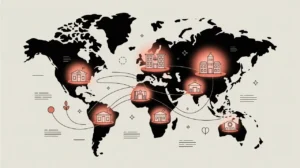Importance of Sector Mapping
Sector mapping provides a structured way to understand the actors, relationships, and dynamics within a given field of activity. It is important because development and social innovation ecosystems are often fragmented, with multiple stakeholders working toward overlapping goals. Mapping helps reveal who is active, where resources are concentrated, and how influence and collaboration flow across organizations and initiatives. This visibility supports coordination, reduces duplication, and highlights opportunities for alignment.
Definition and Features
Sector mapping is the process of systematically identifying and analyzing organizations, networks, policies, and resources that make up a field. Its defining features include:
- Comprehensive Identification – catalogs stakeholders across public, private, nonprofit, and community sectors.
- Relational Analysis – tracks connections, overlaps, and gaps among actors.
- Visual Representation – often uses diagrams, matrices, or digital tools to show structures and patterns.
- Dynamic Scope – adapts to changes in policy environments, funding flows, and market trends.
- Strategic Utility – highlights strengths, weaknesses, opportunities, and threats at a systemic level.
How this Works in Practice
In practice, sector mapping might involve charting all education nonprofits in a region and identifying which focus on literacy, teacher training, or policy advocacy. It could also include mapping healthcare providers, funders, and regulatory agencies to see where service delivery overlaps or leaves gaps. Practitioners may use software platforms to create interactive maps of networks, while funders often commission mapping studies before launching new programs. Challenges include data gaps, inconsistencies in classification, and ensuring that maps remain updated and relevant.
Implications for Social Innovation
Sector mapping enhances social innovation by enabling more strategic engagement with complex systems. For practitioners, it illuminates where collaboration can amplify impact and where unique niches exist for new initiatives. For funders and policymakers, it provides evidence to guide investment, policy, and coordination. When thoughtfully applied, sector mapping transforms from a static inventory into a living tool for collective action, helping diverse actors orient themselves within the larger ecosystem and navigate toward shared advantage.







